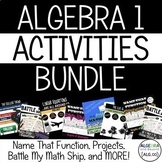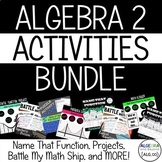End of the Year Math Review Activity – Any Math Topic – Project Based Learning
- Zip
What educators are saying
Also included in
- This bundle is a great addition to any Algebra curriculum! Includes many algebra concepts – one-step, two-step, multi-step, and absolute value equations and inequalities, linear equations, systems of equations, exponential functions, exponents, quadratics, and more! A diverse set of resources – selfPrice $130.00Original Price $226.50Save $96.50
- This bundle is a great addition to any Algebra 2 curriculum! Includes many algebra 2 concepts – imaginary numbers, quadratic functions, piecewise functions, polynomials, radicals, exponentials, rational functions, and more! A diverse set of resources – games, projects, practice worksheets, and more!Price $75.00Original Price $121.50Save $46.50
Description
Connect math in the real world with this review activity that has students explore what it's like to be a vlogger (video blogger). This is perfect for reviewing ANY math concept at the end of the year. Students share their videos with classmates to help them prepare for a final exam.
Students will demonstrate their knowledge and understanding of one review topic from their math course in a video.
Includes:
Note to Teacher (see preview)
Project Handout (100% editable)
- Part A: Topic and Storyboard
- Part B: Create a Video
- Part C: Share and Summary
Rubric: 100% editable
Storyboard Templates (100% editable)
Example Storyboard
Example Video
Student Sign-Up Spreadsheet
∞∞∞∞∞∞∞∞∞∞∞∞∞∞∞∞∞∞∞∞∞∞∞∞∞∞∞∞∞∞∞∞∞∞∞∞∞∞∞∞∞∞∞∞∞∞∞
© Algebra and Beyond
This product is intended for personal use in one classroom only. For use in multiple classrooms, please purchase additional licenses.






